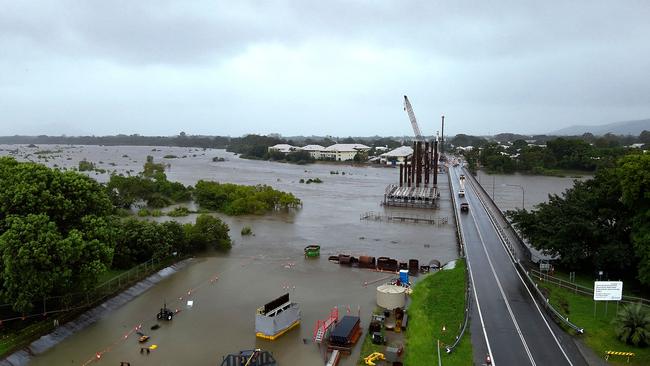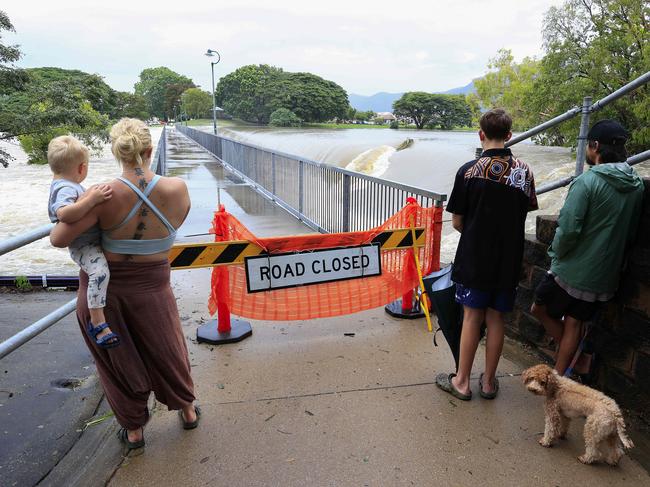Insurers call for funding to build more resilient homes in flood areas
For the second time in six years, several Townsville suburbs face floodwater inundation. Insurers say something needs to change.

Insurers have urged the Queensland and federal governments to fund floodproofing of repeatedly inundated homes as thousands of Townsville residents face being swamped for the second time in six years.
Several houses and businesses in north Queensland have been engulfed and up to 1700 homes in Townsville are in the firing line of the rising Ross River, with the flood height expected to peak on Tuesday morning.
A significant portion of homes facing inundation are not insured and face being trapped in a cycle of rebuilding only to be devastated by the next flooding event, insurers say.
The industry’s peak body said while insurers would pay out claims, many homes were not insured because of high premiums based on their level of flood risk.
Insurance Council of Australia chief executive Andrew Hall said 230,000 homes in Australia were at high risk of flooding, including many properties in the Townsville suburbs that were evacuated on Sunday ahead of possible inundation.
These were the same suburbs that went under as the river broke its banks in 2019.
“Insurance penetration in those areas is much lower than in non-flood areas,” Mr Hall told The Australian. “That’s driven by the flood risk. People can’t afford those premiums.”
Most insurers expected the number of claims to increase significantly this week.
Queensland Premier David Crisafulli said the government wanted to see damaged infrastructure “built back better”.
“I’m determined to make sure we rebuild to a standard that is more resilient,” he said.
Mr Hall said the government could help alleviate future flood events and reduce insurance premiums by contributing funding for homeowners to raise, rebuild or relocate their homes to make them more flood resilient.

Similar payouts were given to homeowners in southeast Queensland and northern NSW after flooding in 2022.
“The big debate we have in the insurance industry in this country is that when a home is lost to a cyclone or bushfire, it is replaced to a higher standard to meet updated building requirements,” Mr Hall said.
“The problem with homes in flood areas is they are replaced like for like.
“We have to look at building the right kinds of homes in some of these locations.
“(Otherwise) it creates almost intergenerational poverty where it puts them on the back foot because they are not able to easily put their home on the market or afford the insurance premium.”
Mr Hall said many of the classic stilted Queenslander-style homes affected by flooding had been spared from much damage because of their elevated construction.
Similarly, some homes in low-lying areas could have their floors and walls made of submersible material and electrical circuits elevated to withstand flooding.
“The problem is that there was a lot of development in the 1990s and early 2000s in flood-prone areas,” Mr Hall said.
“They were brick on concrete slab and when the floodwater goes through them, they wreck everything. There is a design element we need to think about.”
Last time Townsville flooded, many customers were left disappointed after their insurers refused to pay out their claims on the basis that they were insured for stormwater run-off but not floodwater caused by rising waterways.
Mr Hall said after the costly 2022 floods, most insurers now offered only comprehensive options, which included the flood insurance.
While it has largely eliminated the underinsurance problem, it has contributed to increased premiums, which have left some homeowners unable to afford any coverage.




To join the conversation, please log in. Don't have an account? Register
Join the conversation, you are commenting as Logout